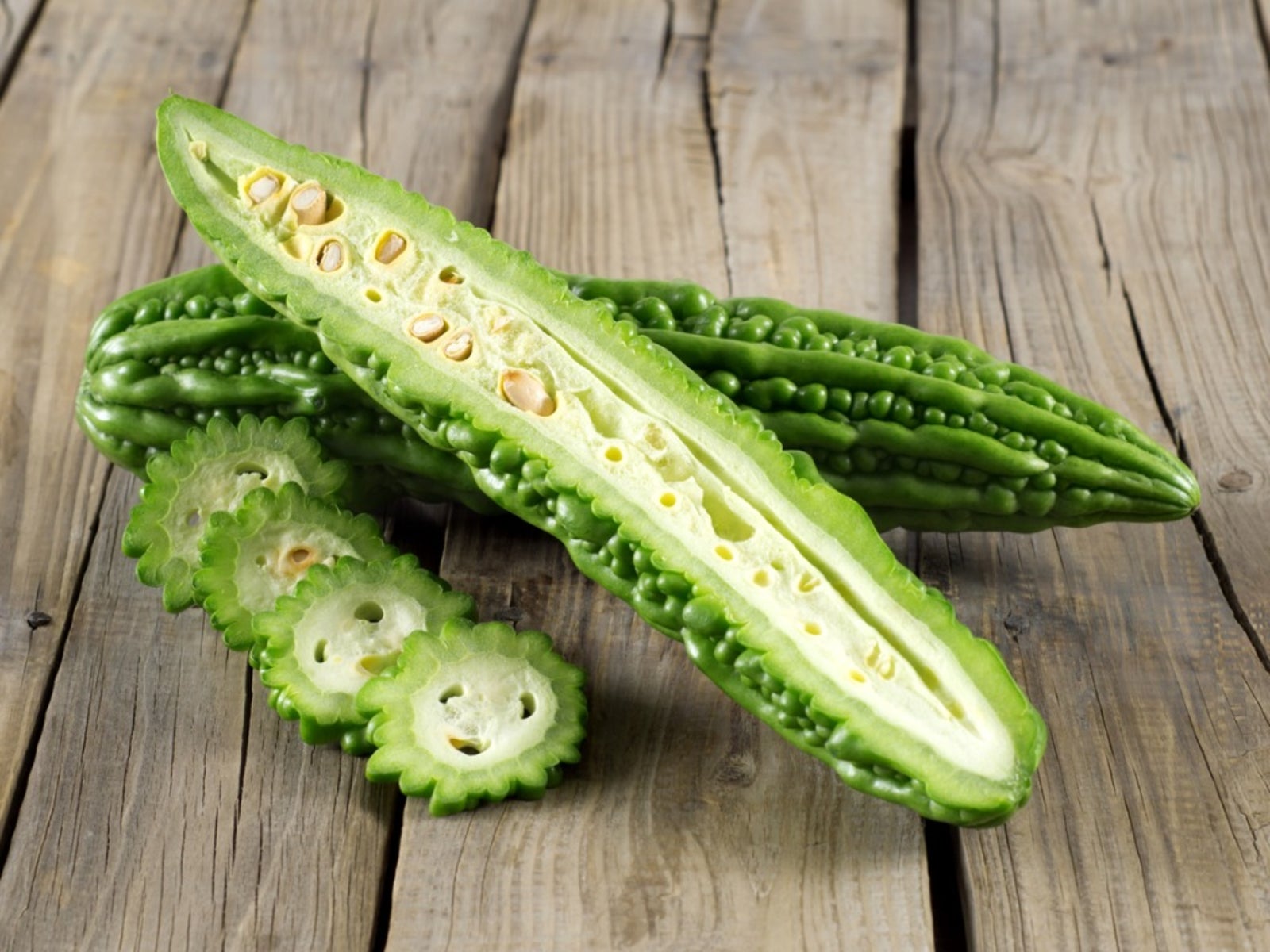
What is bitter melon? You many have seen this fruit if you live in an area with a large Asian population, or more recently at the local farmers market. Bitter melon information lists it as a member of the Cucurbitaceae family, which includes other cucurbits such as squash, watermelon, muskmelon and cucumber. Let's learn more about how to grow bitter melon plants in your own garden.
Bitter Melon Information
Bitter melons are the fruit from an herbaceous vine, which as its name indicates is extremely bitter -- too bitter to eat if allowed to ripen. Hence, the fruit of the bitter melons -- and sometimes the tender leafy shoots -- is harvested while young and then stuffed, pickled or sliced into a variety of menu items. Also known as bitter gourd or balsam pear, bitter melons are harvested prior to seed hardening and are of a uniform pale green with a warty appearance. Fruit from the bitter melon vine can be harvested anytime during the growth period but generally when full sized, still green and about two weeks after anthesis, or the period of time between the opening of blooms and formation of fruit. Bitter melon begins to bloom between four to six weeks after sowing. Bitter melons are indigenous to Asia with southern China and eastern India the most likely centers for domestication. Today, bitter melons are as likely to be cultivated throughout the world for their immature fruit. None of this completely answers the question, “What is bitter melon” so here is some additional bitter melon information. The bitterness from this cucurbit stems from the alkaloid momordicine found in growing bitter melons and not to cucurbitacins, which are found in other Cucurbitaceae members. The darker the variety of bitter melon, the more bitter and intense the flavor of the fruit whether being used in culinary dishes or for its various purported medicinal properties such as a hypoglycemic and stimulant for digestion. The interior of the fruit is a spongy, white pulp peppered with seeds. When bitter melon is sliced, it has hollow areas surrounded by a thin layer of flesh with a central seed cavity. When used for cooking, the pulp is sliced and either parboiled or soaked in salted water to lessen the overly bitter flavor. The resulting texture is watery and crunchy, akin to cucumber. As the flesh of the bitter melon ripens, it turns orange, mushy and splits into sections which curl back exposing seeded bright red pulp.
How to Grow Bitter Melons
Bitter melons are most suited to tropical to subtropical temperatures and thrive in a variety of soils. This rapidly growing vine requires trellising and is usually grown upon a support for climbing vines that is at least 6 feet (1.8 m.) high and 4-6 feet (1.2-1.8 m.) apart. Bitter melon plant care dictates planting when there is no danger of frost and temperatures have warmed. Grown as an annual crop, seeds can be obtained from a number of suppliers and direct sown in almost any soil type, although growing bitter melons do best in deep, well-draining, sandy or silt loam.
Bitter Melon Plant Care
Bitter melon is susceptible to most of the same diseases and insect attacks that plague squash and cucumbers. Mosaic virus and powdery mildew afflict bitter melons and it may be subject to fruit flies, so much so that commercial producers will often cover the developing fruit with paper bags. Bitter melon should be stored between 53-55 degrees F. (11-12 C.) at a fairly high humidity with a shelf life of two to three weeks. Keep the bitter melon fruit away from other ripening fruits to avoid hastening the ripening process.
Sign up for the Gardening Know How newsletter today and receive a free copy of our e-book "How to Grow Delicious Tomatoes".

Amy Grant has been gardening for 30 years and writing for 15. A professional chef and caterer, Amy's area of expertise is culinary gardening.
